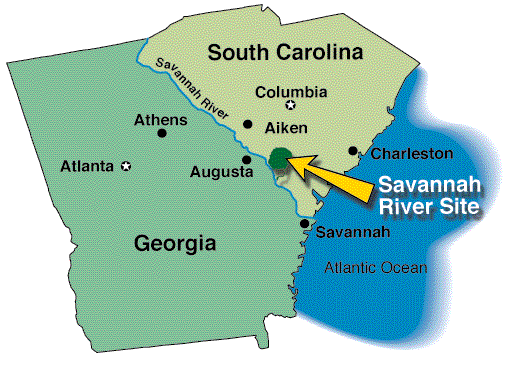It looks like you're using an Ad Blocker.
Please white-list or disable AboveTopSecret.com in your ad-blocking tool.
Thank you.
Some features of ATS will be disabled while you continue to use an ad-blocker.

RADIATION WATCH 2011
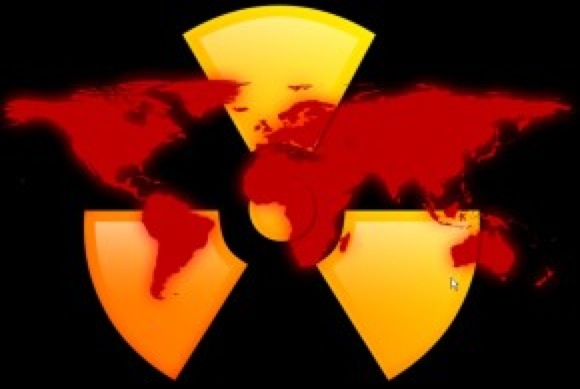
The total number of days between Friday, March 11, 2011 and Friday, November 11, 2011 is 246 days.
[color=Cyan]The radiation poisoning of we, the people, our children, pets, food, water and our land
has continued unabated - 24/7/365
[color=Chartreuse]
- for 7 months, 30 days ... which is:
• 21,254,400 seconds
• 354,240 minutes
• 5,904 hours
• 35 weeks (rounded down)
On this auspicious day, we look to our old friend, Harvey Wasserman, for some poignant words on this Veteran's Day, 11/11/11.
Where Occupy & No Nukes Merge & Win !!!
The global upheaval that is the Occupy Movement is hopefully in the process of changing—and saving—the world. [color=FDD017]Through the astonishing power of creative non-violence, it has the magic and moxie to defeat the failing forces of corporate greed.
A long-term agenda seems to be emerging: social justice, racial and gender equality, ecological survival, true democracy, an end to war, and so much more. [color=3BB9FF]When the power of love overcomes the love of power,' said Jimi Hendrix, [color=3BB9FF]'the world will know peace.'
Such a moment must come now in the nick of time, as the corporate ways of greed and violence pitch us to the precipice of self-extinction. At that edge sits a sinister technology, [color=Chartreuse]a poisoned cancerous power that continues to harm us all even as 3 of its cores melt and spew at [color=Chartreuse]Fukushima.
For decades, the No Nukes campaign has conducted hundreds of demonstrations involving thousands of arrests in dozens of countries. Violence has been renounced and almost entirely avoided. Injuries have been present but minimal.
There’s been at least one murder, that of the anti-nuclear activist Karen Silkwood. But overall, given the magnitude of the movement over more than 40 years of confrontation, individual casualties have been slight.
And the accomplishments have been historic.
Whereas Richard Nixon once promised 1000 US reactors by the year 2000, there are now 104.
These dangerous relics are now under attack, especially at Vermont Yankee and Indian Point, New York.
NukeFree.org
Nearly half of the 104 nuclear reactors operating in the United States are close to major fault lines, including the Diablo Canyon and San Onofre plants located near California's San Andreas Fault.
The Indian Point nuclear power plant in New York is less than two miles from the Pampano fault line, and sits within 50 miles of more than 17 million people.
Worldwide, we have seen Germany renounce atomic energy and commit to renewables. Siemens, once a corporate nuclear flagship, has turned instead toward Solartopian technologies. ...
But the final fight remains to be won.
While pouring billions into cornering the global solar market, China is still poised to build some 30 reactors. India, Britain, Korea and a few others are also toying with more.
But especially in the wake of Fukushima, they are not a done deal.
The ongoing Fukushima disaster/fiasco should have done the job many times over, but activists and concerned citizens cannot rest. Now follows what may be the other elephant in the room.
In the United States, the key is to deny the nuclear industry the federal funding without which it can’t build new reactors.
[color=Salmon]And here is where the Occupy and No Nukes movements intersect.
Wall Street has actually retreated, and will not finance new commercial reactors.
So, if we couple financing with insurance with waste disposal, we have the weakest three legs underpinning the fallacy of nuclear power - eliminate, or mortally wound - any of these three and nuclear power will not have a leg to stand on, er, a stool upon which to sit ... whatever.
And from Veteran's Today, today: 11/11/11:

"Such is the irresistible nature of truth that all it asks, and all it wants, is the liberty of appearing." – Thomas Paine
Japan Catholic Group Calls for End to Nuclear Plants

tfw
[align=center][color=magenta]Liberty & Equality or Revolution[/align]

Greetings:
This video, “Dial ‘M’ For Meltdown,” was posted by member borutp a few months ago and the thread was immediately closed for lack of ‘meaningful comment’ in the OP, so perhaps this information was overlooked by many.
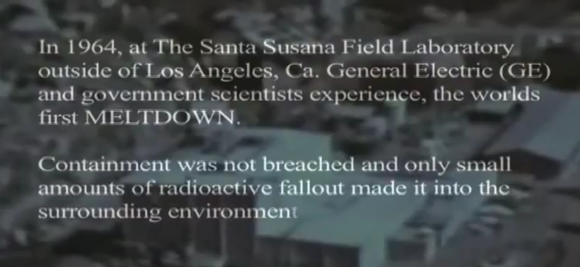
Whilst continuing our research into radiation poisoning, we found exasperating testimony from possible victims in California, which led to this “find of the day,” as we have not seen this video heretofore.
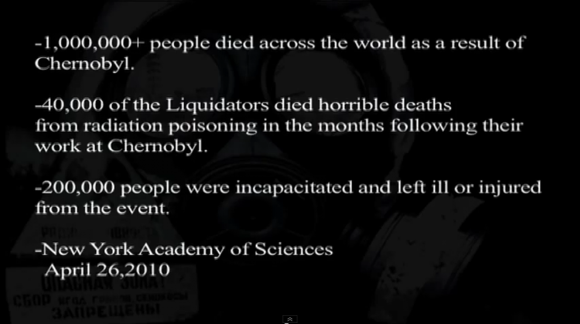
Because of the well-presented, factual information regarding the radiation poisoning befalling all life on our fragile Planet Earth, we feel that this presentation is something everyone should be able to view, so we share it herewith.
Perhaps a couple of the postings in the ‘Comments’ section of the video on You Tube are the most chilling:
I was just diagnosed with breast cancer on July 26, 2011. No family history and a very healthy eater. I live 6 miles from the Pacific Ocean in Southern Cal, south of Los Angeles.
Hot particles?
My coworker was just diagnosed with breast cancer in June of 2011, too.
Same deal. No family history, healthy eater.
We work together 3 miles from the Pacific Ocean.
Hot particles?
Too weird if you ask me.
Maybe a coincidence, maybe not. I'm 52, she's 30.
Not good.
jsorensens2 (3 months ago)
@jsorensens2 I am sorry to hear that. My Grandmother just passed from cancer.
My Uncle was just diagnosed along with my god father too.
My family's dog had to have a cancerous tumor removed from her leg.
I live in Los Angeles too.
Scary times.
Stay away from dairy, P.I. from health food should help your thyroid, but other than that, its all a gamble.
ScamArtists33 (3 months ago)
Good video! Could humans have come up with a more idiotic way to boil water? I don't think so
NSSL1 (3 months ago)
The truth is a powerful weapon.
When it begins to sink into the minds of every American what has been done to us by this obscenity, perhaps the weather control geniuses at Haarp and in the Navy will figure out a way to slow or change the winds that are bring this poison to our shores from Japan.
How many millions are going to die from Cancer as a result of this?
It's untold and beyond guessing - heaven help us all!
PRAY! That may be our only hope to avoid death by cancer caused by radiation.
markinscottsdale (3 months ago)
FYI, depending on the weather, it takes around 3 days for airborne contaminates from the Fukushima disaster/fiasco to reach the West Coast.
Here is the Norwegian Institute for Air Research (NILU) FLEXPART model of the potential release cloud of Xenon-133 from three days previous.
Looks like L.A. was ground zero ...

Now, here is the Xenon-133 model from 9 May 2011, the LAST one, as NILU has ceased to provide these anymore... we pondered this question months ago:
Who got to the NILU to cease reporting?
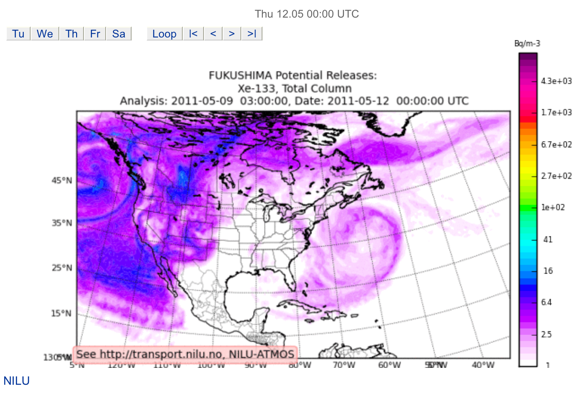
It’s not like the “problem” has gone away, has it?
And this from (U.S. North Georgia mountains) ATS member Deja ‘Vu, on 28 March 2011:
I will share a scary story with ya.
I went outside last Thursday night to move some of my fish tank jugs and I got rained on heavily.
Well, I thought nothing of it and then I took a shower and grabbed a bite to eat then went to sleep. I woke up at 4 am so sick I thought I was dying.
I had nausea, blotchy skin, stomach pain and I began throwing up constantly. It got so bad that when I noticed the blood I went to the hospital with a 102 temp and severely dehydrated.
They told me they thought it was food poisoning.
Well, needless to say, here it is 3 days later and I am just beginning to feel better.
I'm now staying inside with the air conditioner off just to be safe and staying out of the rain. Scared the crap out of me.
It was probably something I ate but [color=Chartreuse]It could have been a particle I swallowed.
We sincerely hope not, but the symptoms seem eerily similar to radiation poisoning.
Please let us know in a follow-up post that you have successfully recovered and any advice on recovery methods that worked for you in this case - whatever it was.
It may be only food poisoning, possibly agitated by radiation washing out of the air... we can only guess.
To be continued ...

Peace Love Light
tfw
[align=center][color=magenta]Liberty & Equality or Revolution[/align]

Greetings older friend kdog1982:
Good heads-up information and, if you don’t mind, we’ll help to expand upon your investigation of the Savannah River Site.
The Savannah River Site (SRS) is a nuclear reservation in the United States in the state of South Carolina, located on land in Aiken, Allendale and Barnwell Counties adjacent to the Savannah River, 25 miles (40 km) southeast of Augusta, Georgia. The site was built during the 1950s to refine nuclear materials for deployment in nuclear weapons.
It covers 310 square miles (800 km2) and employs more than 10,000 people.
A major focus is cleanup activities related to work done in the past for the nation's nuclear buildup. Currently, none of the reactors on-site are operating (see list of nuclear reactors), although
two of the reactor buildings are being used to consolidate and store nuclear materials. more
Which brings us to the question: because Yucca Mountain is either stalled or dead, is SRS another de facto waste storage repository in the making?
...As the Obama administration and Senate leaders move to scuttle a proposed repository for the waste in Nevada, the Hanford nuclear reservation in Washington state — along with federal facilities in Idaho and South Carolina — could become the de facto dump sites for years to come.
29 September 2011
Savannah River Site Gets Nuclear Waste –
National Academy of Sciences Report Confirms Nuclear Weapons Testing Not Needed

Under Secretary of State for Arms Control Ellen Tauscher said on Monday, September 19, 2011, that high-level nuclear waste once destined for the Yucca Mountain repository will be sent, instead, to the Department of Energy’s Savannah River Site.
Currently, millions of gallons of high-level nuclear waste are stored in 49 leaking tanks on the site as well as [color=Chartreuse]huge amounts of surplus plutonium.
[color=Cyan]Deadly chemicals and radiation will contaminate the facility for thousands of years.
'The Bomb Plant,' as locals refer to the site, is uniquely unsuitable for a permanent nuclear waste repository, according to leading geologists. It sits on an earthquake fault and one of the most important aquifers in the South. The sandy soil and swampy conditions make it highly vulnerable to waste seepage.
The Obama Administration has spent more than $1 billion in Stimulus Act funds cleaning up legacy Cold War nuclear and chemical waste at the site. Despite this effort, [color=Chartreuse]there is now more radioactive waste at SRS than when the clean-up started.
Sounds like the same people are running this show that are "decontaminating" in Japan.
The idea of bringing nuclear reactor waste and surplus weapons plutonium from around the world to SRS only exacerbates already chronic problems.
The 312 square mile site near Aiken, South Carolina, was once the home of five reactors that churned out nuclear materials for H-bombs. The last reactor at SRS had to be shuttered for safety reasons during the Reagan Administration. Tritium, which is needed for nuclear weapons, is produced by Tennessee Valley Authority reactors and processed into gas for nuclear weapons at SRS.
Today, DOE’s National Nuclear Security Administration is paying the French-government-owned-company AREVA to supervise the construction of a new, multi-billion dollar facility to convert excess weapons plutonium into mixed oxide (MOX) fuel for use in civilian nuclear power reactors.
(AREVA provided a less potent MOX fuel to Fukushima Daiichi Reactor Number Three last September that suffered a hydrogen explosion after the March earthquake and tsunami.)
The $4.8 billion MOX facility, scheduled to open in 2016, is designed to dispose of 34 metric tons of surplus weapons-grade plutonium by using small amounts to make fuel for commercial reactors. (...)
To be continued...

Peace Love Light
tfw
[align=center][color=magenta]Liberty & Equality or Revolution[/align]

(... continued from previous...)
30 August 2009
After spending $10 billion to $12 billion over the past 25 years studying a nuclear waste dump at Yucca Mountain, President Barack [color=3BB9FF]Obama is fulfilling a campaign promise to kill it as a site for the repository.
...
If Yucca is closed, a search for a new site for a national repository likely would start with the 31 states on the original list of potential locations. In addition to Hanford and the Idaho National Laboratory, the states with possible sites include Texas, Georgia, North Carolina, South Carolina, Mississippi and Pennsylvania.
Scrapping Yucca Mountain also could have national security ramifications. The Navy would have no place to permanently store the used reactor fuel that's powered its aircraft carriers and submarines.
...
In a report late last year to Congress, the department (DOE) warned that by not providing adequate and timely storage for the defense nuclear waste, it would be "unable to honor" its commitments to the states where the waste is currently stored, including Washington, Idaho and South Carolina.
more
Now, where is all that waste residing at this time?

SRS was never intended, nor is it equipped to be, a final nuclear waste repository, [color=8AFB99]but through redefinition of legal terms and the closing of the Yucca Mountain site, [color=3BB9FF]it has become one.
SRS, with all its nuclear ruins and more curies of radioactivity than any place in America,
is now the storage site for the world’s most dangerous materials.
When one considers that SRS produced [color=8AFB99]36 metric tons of plutonium, or somewhat more than one-third of the U.S. plutonium-239 stock during the Cold War, one might ask how much of this 36 metric tons is accounted for worldwide, and how much is on-site today?
Add that to the fact that SRS also produced essentially all the tritium used in the nuclear weapons program, and one might think that this is a recipe for disaster. Add that to the fact that an additional 2.5 million pounds of low-level radioactive waste are presently generated at SRS each year.
SRS is also home to the Savannah River National Laboratory and the nation's only operating radiochemical separations facility.
Its tritium facilities are also the United States' only source of tritium, an essential component in nuclear weapons. And, the nation's only mixed oxide fuel (MOX) manufacturing plant is being constructed at SRS. When operational, the MOX facility will convert legacy weapons-grade plutonium into fuel suitable for commercial power reactors.
... will convert legacy weapons-grade plutonium into fuel suitable for commercial power reactors.
All the while implying that there is a market - hence - justification - for building this monstrosity, which there is not; the market does not exist. Period.
So then, why build it?
Future plans for the site cover a wide range of options, including host to research reactors,
a reactor park for power generation, and other possible uses. (...)
After digging through mounds of DOE/SRS/AREVA nukespeak, we begin to sense the presence of a rather large elephant in the room - the Defense Waste Processing Facility (DWPF).
In 1993, K-Reactor was placed in cold stand-by condition as America's tritium source, and tritium was introduced into the Replacement Tritium Facility and radioactive operations commenced. Also, construction was started on the Consolidated Incineration Facility and non-
radioactive test runs of the DWPF began.
Three years later, the Defense Waste Processing Facility introduced radioactive material into the vitrification process. The DWPF was started in 1996 to vitrify essentially all the radioactivity in the high-level waste tanks at Savannah River Site in about 6,000 glass logs cast into steel canisters.
OK, so we went looking for further information on these "glass logs" and “steel canisters,” wondering whether or not they were in fact, the same canisters called for by the DOE for Yucca Flats.
Also, it seems that somewhere we read about "vitrification" being so prohibitively expensive that the glass log concept is merely a red herring, just to buy time until Yucca Mountain is forced through.
Inquiring minds want to know.
To be continued ...

Peace Love Light
tfw
[align=center][color=magenta]Liberty & Equality or Revolution[/align]
– Thomas Paine

RADIATION WATCH 2011

[color=Chartreuse]The total number of days between Friday, March 11, 2011 and Friday, November 18, 2011 is
253 days.
The radiation poisoning of we, the people, our children, pets, food, water and our land
has continued unabated - 24/7/365
[color=Cyan]
- for 8 months, 8 days ... which is:
• 21,859,200 seconds
• 364,320 minutes
• 6,072 hours
• 36 weeks (rounded down)
Folks, you just can't make this stuff up!
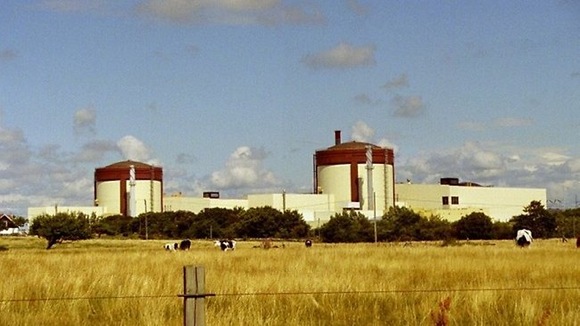
Misplaced Vacuum Cleaner Causes Swedish Reactor Fire
"[color=3BB9FF]Such items must not be kept in an enclosure when doing a pressure test," Peter Gango, head of nuclear power at energy company Vattenfall, said.
[color=8AFB17]'It was human error and such a thing should not occur in our power plants.'
The fire in the reactor near the western city of Gothenburg cost the plant's operator hundreds of millions of dollars...
There's got to be more to this story, or are we to believe that the Swedes actually vacuum their RPV?
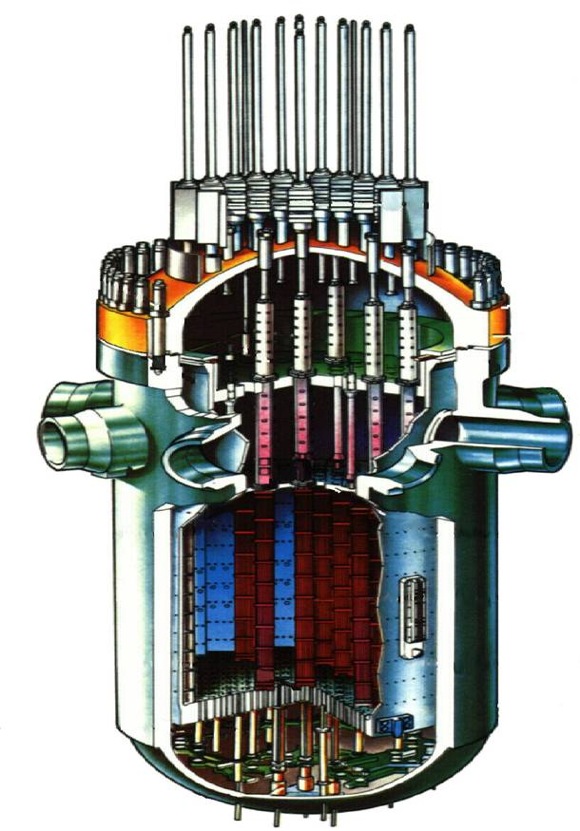
Should we forward this leaked pic to TEPCO?

Meanwhile, back at the ranch, many of the "old guard" are quite eloquent in their observations and have quite a bit of good information to ponder.
Our old friend, Harvey Wasserman, for example.
Where Occupy & No Nukes Merge & Win !!!
The global upheaval that is the Occupy Movement is hopefully in the process of changing—and saving—the world.
[color=FDD017]Through the astonishing power of creative non-violence, it has the magic and moxie to defeat the failing forces of corporate greed.
A long-term agenda seems to be emerging: [color=Salmon]social justice, racial and gender equality, ecological survival, true democracy, an end to war, and so much more.
Jimi Hendrix perhaps said it best:
[color=3BB9FF]When the power of love overcomes the love of power, the world will know peace.
Such a moment must come now in the nick of time, as the corporate ways of greed and violence pitch us to the precipice of self-extinction.
At that edge sits [color=Chartreuse]a sinister technology, a poisoned cancerous power that continues to harm us all even as 3 of its cores melt and spew at [color=Chartreuse]Fukushima. more
Nearly half of the 104 nuclear reactors operating in the United States are close to major fault lines, including the Diablo Canyon and San Onofre plants located near California's San Andreas Fault.
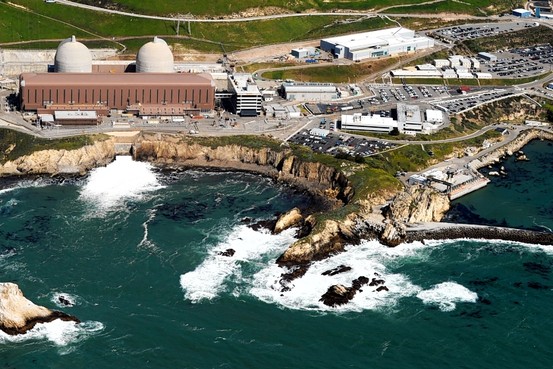
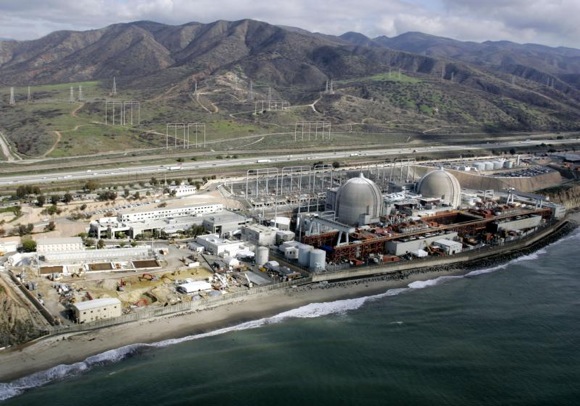
Here we are at a moment in time that may well define the future of life on this planet as we knew it before 3/11.
One would think that any one of the shortcomings of nuclear power would have sealed its fate, long before the world changed and the worst industrial accident in history has become the greatest environmental challenge of all time.
The ongoing Fukushima disaster/fiasco should have done the job many times over, but activists and concerned citizens cannot rest, as the proponents of nuclear have geared up for "the final push."
OK, let's find ways to push back, intelligently.
Please consider what may be another elephant in the room.
In the United States, the key is to deny the nuclear industry the federal funding without which it can’t build new reactors.
[color=Salmon]And here is where the Occupy and No Nukes movements intersect.
Wall Street has actually retreated, and will not finance new commercial reactors.
So, if we couple financing with insurance with waste disposal, we have the weakest three legs underpinning the fallacy of nuclear power - eliminate, or mortally wound - any of these three and nuclear power will not have a leg to stand on, er, a stool upon which to sit ... whatever.
Let's focus on the waste repository shell game for a bit and see where that takes us.

Peace Love Light
tfw
[align=center][color=magenta]Liberty & Equality or Revolution[/align]
It's been raining heavily/steadily most of the afternoon here. Perhaps the radioactive rain everyone says doesn't exist spiked the reading temporarily.
A quick blog search returned this:
MONDAY, NOVEMBER 21, 2011
RADIOACTIVE rainwater in Michigan. Child develops rash from possible radiation burns. Please forward!!
timucinleflef.blogspot.com...
MI SKY HIGH RADS and amp KID SICK
video.godlikeproductions.com...
Originally posted by this_is_who_we_are
reply to post by Aircooled
It's been raining heavily/steadily most of the afternoon here.
Perhaps the radioactive rain everyone says doesn't exist spiked the reading temporarily.
Greetings:
Wishing you the best in that situation (stay dry) although, it is actually quite exciting to have your ear to the ground, so to speak.
Please keep us updated as to your personal experiences and observations, if you would like to share. Especially the animals who drink water outdoors.
Meanwhile, back at the ranch - check these stories out for other examples of Nukespeak:
4 September 2011
4 Above Limit Radioactive Cesium Tea Products Reach Market
Radioactive cesium exceeding the legal limit has been detected in four tea products that reached the market and were made with tea leaves from Saitama and Chiba prefectures, a recent health ministry inspection showed.
One of the products, using tea leaves from Chiba Prefecture, contained [color=3BB9FF]2,720 becquerels of cesium per kilogram, far above the government-set limit of 500 becquerels, the Health, Labor and Welfare Ministry said Friday. (...)
12 October 2011
Fukushima Rice All Cleared for Shipment, Radioactive or Not
(...) Fukushima rice all cleared for shipment, radioactive or not because in the "main" test administered by the Fukushima prefectural government, none exceeded the stringent national provisional safety limit of 500 becquerels/kg of radioactive cesium.
The highest was from a district in Nihonmatsu City, 470 becquerels/kg. But not to worry, rice farmers of the particular district.
The Fukushima prefectural government will buy up all your rice, according to Kyodo News English (10/12/2011), probably using the money from the national government (i.e. nation's taxpayers' money).
Wow! Under the wire by 30 becquerels/kg (7%). Now, doesn't that make you feel all warm and cozy and hungry... not! Wonder what the cut-off number really is, if there really is one?
It's a win-win for those rice farmers who went ahead and grew rice, regardless of concern for radioactivity in the soil - the same thing the farmers are doing for the next crop.
If testing shows less than 500 becquerels/kg of cesium, they are all set to sell. If testing shows close to 500 becquerels/kg, the government buys the crop.
No information on what the prefecture is going to do with the rice it buys up, but I suspect it will find its way to the market eventually. [color=3BB9FF]It's a lose-lose for a minority of conscientious farmers in Fukushima who chose not to grow at all this year - no sales, no compensation.
Good luck, consumers, finding radiation-free rice and fighting critics who tell you that you are selfish on insisting on clean food. After all, it's not like the children are at risk ... oops!
14 October 2011
Radioactive Fukushima Rice Headed For Restaurants, Schools
and Consumers In Tokyo!
Now that the rice from all districts and cities in Fukushima Prefecture are declared “safe” (i.e. below the provisional safety limit of 500 becquerels/kg of radioactive cesium), the Fukushima prefectural government is gearing up for the PR campaign it plans to mount to promote Fukushima rice in restaurants and school lunches and to consumers in the Tokyo metropolitan area. (...)
Confined to only Tokyo? Isn't that where most tourists might tend to go (both of them)?
Why, we might ask?
The NHK article has an accompanying news clip, where you get to see how the “testing” was done at the Fukushima prefectural government. A government worker is waving a scintillation meter over a plastic bag that contains a small amount of brown rice.
He spends about 2 seconds at most for each bag.
If you recall, waving a scintillation meter over the meat cow was how they were testing the meat for radiation at first.
How'd that work out?
5 November 2011
CRIMINALS:
Koriyama City in Fukushima To Feed 2011 Rice To School Kids
To be continued...

tfw
[align=center][color=magenta]Liberty & Equality or Revolution[/align]
Yes that's up wind from me as well [Eastern Ont.] and it was higher when I first saw it. By the time I hit Print screen it had dropped 50 points to 112, then Poof!
Well my Soeks dosimeter arrived [275-300 bucks on Ebay] and I finally figured out how to change the menu to English from Russian. My readings seem to wander between 10 and 22 cpm, if I'm converting right? Inside the house it wanders from 0.10 mcSv/h to about 0.18. Outside in the yard it wandered in between 0.13 mcSv/h up to 0.22. So normal background, I guess? I flip it on a few times a day.
I checked our picnic table because the wood would absorb the rads more. Sometimes it reads higher on the grass, sometimes the picnic table.
I have an FB friend in Seattle Wash. who also bought one. Her readings today were lower than mine. Her readings ranged from 0.04 mcSv/h to 0.11. So it's good news for a change. If one of us has a spike, I'll post.
I know......the pictures fuzzy. I'll improve with practice

Just when you thought things couldn't get any worse in Japan, another horror story appears.
5 November 2011
CRIMINALS:
Koriyama City in Fukushima To Feed 2011 Rice To School Kids
Did anyone say in the comment section that it was a duty of adults to protect children?
I guess not in Koriyama City, which is located in high-radiation “Nakadori” (middle third) of Fukushima Prefecture and where 500,000 becquerels/kg of radioactive cesium was found in the rice hay.
The city will start using this year’s rice harvested in the city in the school lunches, starting next Tuesday.
Since the new rice harvested in Fukushima is all cleared for shipping as the sampling test has proven it is “safe,” it is just a matter of time 'til it’s fed to the most vulnerable and without voice – children.
Just as the Fukushima government, headed by THAT governor, has been pushing ever since declaring “safety” on October 12. Koriyama City has decided to use the new rice harvested in the city for school lunches starting next week. Today, the city explained the radiation detection system to the parents.
Koriyama City will require JA Koriyama, who will ship the rice, to conduct voluntary testing of radioactive materials, and will start using the city’s newly harvested rice in school lunches starting Tuesday November 8. (...)
...voluntary testing of radioactive materials...
Sounds like these guys were coached by the EPA.
For consumers outside Fukushima Prefecture, there is no way of telling whether a bag of new rice contains Fukushima rice, if it is a bag of “blended” rice. There is no requirement to list the places of origin if the rice from different locations are blended.
All the label will say is “made in Japan."
While consumers can still avoid, if they want to, Fukushima rice by avoiding “blended” rice and avoiding buying bento at convenience stores, school children cannot.
A nation is utterly broken when the leaders think nothing of using children as propaganda tools, and excoriate those citizens who dare raise their voices.
It’s not just Fukushima Prefecture either.
No end in sight of Japanese nuclear horror.
16 November 2011
630 Bq/Kg Cesium In Rice From Fukushima City (NHK)
For those of you who wrote to me that Fukushima rice was “safe” because it all “tested” well below the safety limit of 500 becquerels/kg of radioactive cesium, sorry. NHK has a piece of bad news for you.
630 becquerels/kg of radioactive cesium has been detected from the rice grown and harvested in Onami District of Fukushima City in Fukushima. It was discovered only because one farmer asked the local JA to test his rice. (...)
"We are running out of safe food."
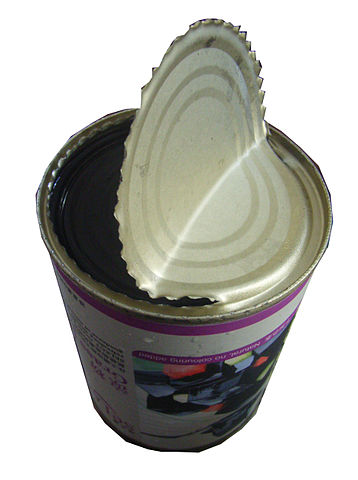
17 November 2011
Japan Residents Running Out Of Safe Food
I used to think canned food was ok, but even that was an illusion.
Greenpeace measured canned fish.
The samples were taken from 15 branches of 5 major super market chains from North Japan to Kanto area. The measurement was conducted in October.
As a result, they measured cesium from 27 of 75 canned fish.
They announced it on 11/16/2011.
Eg,4.6 Bq/Kg from canned chub mackerel.
This seems to be merely a beginning of the huge food problem. (...)
The tap water isn't safe either: 104,000 Bq/kg of Cesium from river in Fukushima.
The Ministry of the Environment published the measurement data of Cs-134, -137 contained in river, lake (source of tap water), and off shore of Fukushima.
(Lake, source of tap water)
• Cs-134 ~ 26,000 Bq/ kg
• Cs-137 ~ 32,000 Bq/ kg
18 November 2011
Japan Finally BANS Fukushima Rice
(...) Authorities in Fukushima prefecture say rice produced near the stricken atomic power plant contained caesium they measured at 630 becquerels per kilogram. The government safety limit is 500 becquerels. (...)
A team of international researchers this week said elevated levels of caesium in soil in the region would “severely impair” food production in eastern Fukushima.
The study, published in the US-based Proceedings of the National Academy of Sciences journal, suggested farming in neighbouring areas could also suffer because of radiation. (...)
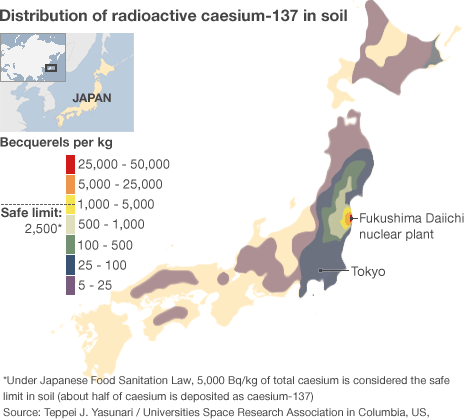

tfw
[align=center][color=magenta]Liberty & Equality or Revolution[/align]
Such is the irresistible nature of truth that all it asks, and all it wants, is the liberty of appearing.
Thomas Paine

RADIATION WATCH 2011

[color=Cyan]The total number of days between Friday, March 11, 2011 and Friday, November 25, 2011 is
253 days.
[color=9AFEFF]The radiation poisoning of we, the people, our children, pets, food, water and our land
has continued unabated - 24/7/365
[color=Chartreuse]
- for 8 months, 8 days ... which is:
• 22,464,000 seconds
• 374,400 minutes
• 6240 hours
• 37 weeks (rounded down)
Are we any closer to a solution to this disaster/fiasco than we were last week at this time?
If not, why not, one ponders, seemingly alone...?
Please, Dear Reader, post here your gleanings about the sanctity of life on precious Mother Earth and what is being done to preserve it for all to see and share.
BTW, what is the justification for nuclear power plants today?
What was the justification to begin this escapade into nuclear madness?
'Atoms For Peace'
For as long as there has been federal control of nuclear research and materials, there has been an interest in using commercial nuclear reactors as a source of materials to make weapons. In the early 1950's, it was recognized that the weapons program would require more plutonium than could be furnished by the Atomic Energy Commission (AEC).
One suggestion, made by Dr. Charles A. Thomas, then executive vice-president of Monsanto Chemical Company, was to create a dual purpose plutonium reactor, one which could produce plutonium for weapons, and electricity for commercial use.
As in "Agent Orange" Monsanto?
(...) Miamisburg was the site of one of the first post-war U.S Atomic Energy Commission (AEC) facilities, beginning in 1947. The Dayton area had supported numerous secret operations for the War Department during World War II.
As the war ended, the majority of these operations were moved to the Miamisburg Mound Laboratory, which was operated by the Monsanto Chemical Company.
[color=Cyan]The Mound Labs were to monitor all aspects of the US nuclear defense stockpile. source
Interesting job to "farm out" to a chemical company.
A 1951 study undertaken by the AEC concluded that commercial nuclear reactors would not be economically feasible if they were used solely to produce electricity; they would be, however, if they also produced plutonium which could be sold.
Utilities themselves were only mildly intrigued with the notion of being able to produce "too cheap to meter electricity," and [color=Chartreuse]only so long as someone else took over the responsibility for the waste products, and indemnified them against catastrophic nuclear plant accidents.
(...)
By "dual-purpose" we mean that the plants would be primarily for the production of power but would also would produce plutonium for military purposes as a by-product. In our judgment, these plants...would be justified from an economic standpoint only if a substantial value were assigned to the plutonium produced."
So, how much is that?
Each year a typical 1000 mega-watt (MW) commercial power reactor will produce [color=Chartreuse]300 to 500 pounds of plutonium -- enough to build between 25 - 40 Nagasaki-sized atomic bombs. ... source
Folks, you just can't make this stuff up!
(...) It takes about 15 pounds of plutonium-239 or uranium-235 to fashion a crude nuclear device. The technology to enrich the isotopes is available for about one million dollars.
(...)
In an inventory taken between October, 1980, and March, 1981, the U.S. government could not account for about [color=3BB9FF]55 pounds of plutonium and 159 pounds of uranium from its weapons facilities.
The explanation given for this Missing material was "accounting error" and that the materials were "stuck in the piping." (...) source
Only a couple hundred pounds of the most deadly substances on the planet goes missing
in a six-month period. One might wonder about the true amount that went missing in the subsequent 30 years ...
Not to worry.
Nothing to see here.
This is not the plutonium you seek.
Go back to your homes (if you still have one.)

tfw
[align=center][color=magenta]Liberty & Equality or Revolution[/align]
Originally posted by thorfourwinds
Folks, you just can't make this stuff up!
Your post would seem to contradict that.
Such is the irresistible nature of truth that all it asks, and all it wants, is the liberty of appearing.
Thomas Paine

RADIATION WATCH 2011

[color=Chartreuse]The total number of days between Friday, March 11, 2011 and Friday, December 2, 2011 is
267 days.
[color=Salmon]The radiation poisoning of we, the people, our children, pets, food, water and our land
has continued unabated - 24/7/365
[color=Cyan]
- for 8 months, 8 days ... which is:
• 23,068,800 seconds
• 384,480 minutes
• 6408 hours
• 38 weeks (rounded down)
Are we any closer to a solution to this disaster/fiasco than we were last week at this time?
Let's take a look at recent headlines:
2 December 2011
Nuclear Experts: “We have to be prepared for the worst case scenario” —
5-10 meter barrier must be installed beneath Fukushima reactors
• TEPCO has revealed “that melted nuclear fuel has nearly reached the bottom steel wall under the concrete”
• “If the erosion expands another 37 centimeters, it would be hitting the steel wall”
• “If the fuel melts through the remaining concrete embedment, which is only some 30 centimeters, it is bound to seep into the soil”
• “Experts say TEPCO must find a measure to prevent fuel leakage“
• “Experts stress TEPCO must promptly find a way to put a stop to the fuel erosion inside the reactor“
However, TEPCO's analysis is rough at best because it is [color=Chartreuse]a prediction of the current situation inside the reactor based on its temperature change and injection of cooling water.
..."I think they must install a 5 to 10 meter barrier in the basement to prevent the worst case scenario."
Huh? What “basement?”
What “worst case“ scenario?
Exactly how does that work?
Let’s take water injection. Wonder what the formula is to relate tons of water per hour to the erosion coefficient per centimeter based on temperature change...
Leakage of melted fuel may invite a host of difficult problems such as safe removal of the fuel in a cold shutdown of the nuclear reactor in the future.
That's a quaint way of putting it.
Perhaps TEPCO is just realizing that a "cold shutdown" might be a tad difficult when the poolium has left the building.
2 December 2011
Mainichi: Gov’t session reveals 400,000 TIMES normal radioactive xenon-133 levels in Chiba — Actual figure may be MUCH higher
CHIBA -- Radioactive xenon-133 some 400,000 times normal levels was detected in the atmosphere here immediately after the outbreak of the crisis at the Fukushima No. 1 Nuclear Power Plant, a radiation survey organization said.
It took three months before the volume of radioactive substances returned to normal levels...
The average amount of xenon-133 in the atmosphere was 1,300 becquerels per cubic meter of air in Chiba between March 14 and 22, as compared with zero to 3.4 millibecquerels before the crisis.
The volume reached 400,000 times normal levels shortly after the nuclear crisis was triggered by the March 11 tsunami, according to the center.
[color=Salmon]Since xenon-133 hardly reacts to any other substance, there is no fear of internal exposure to radiation even if inhaled, experts say.
2 December 2011
TEPCO, industry ministry secretly agreed to abandon nuclear reprocessing plant
in 2002
... When the application for the Rokkasho project was filed in 1989, construction expenses were predicted to reach 760 billion yen.
However, a series of problems including water leaks from a spent nuclear fuel storage pool assured that the construction cost would end up being over 2 trillion yen.
If the plant reached full operation, another 1 trillion yen would become necessary to cover future demolition costs. TEPCO and other utilities began voicing concerns about the viability of the Rokkasho project, leading METI to set up the meeting in May 2002.
... .
To be continued...

tfw
[align=center][color=magenta]Liberty & Equality or Revolution[/align]

(... continues from previous post)
...Three months later, however, when TEPCO's cover-up of cracked equipment and other damage was exposed, Araki and Minami resigned. As a result, a second meeting to negotiate the details of the Rokkasho withdrawal never took place.
Then TEPCO Chairman Araki, who is currently an advisor to the utility, refused to be interviewed about the case, saying that his "[color=Cyan]memories (about it) are vague."
Former TEPCO President Minami said that he "[color=Cyan]has no recollection" of the 2002 meeting, but added, "We were talking with METI about whether to withdraw from the reprocessing project, and
I discussed it with Araki and (then Vice President and current Chairman) Katsumata."
Katsumata also refrained from saying whether the meeting had taken place, but said, "We had about five management meetings within our company about whether or not to go forth with reprocessing." Meanwhile, former METI official Hirose said, "[color=Cyan]I absolutely have no recollection."
So where are the minutes from said management meetings?
3 December 2011
Fukushima worker recalls eerie, deep popping noise from bottom of reactor before boots melted
..."When I got to the place to open the valve, I heard eerie, deep popping noise from the torus (a donut-shaped structure at the bottom of the reactor)," he said.
"When I put one of my feet on the torus to reach the valve, my black rubber boot melted and slipped (due to the heat)..."
...because it was out of power, workers had to go to the actual point to open the lid (to vent the reactors).
However, it was extremely hot because of the exposed fuel inside of the reactor.
A worker states, once they stepped on the ladder, the shoes got melted like glue immediately.
It was not just the heat, [color=Chartreuse]radiation level was also extremely high...
This story is just plain weird. See what you think the point is.
3 December 2011
Confusion clouds Education Ministry notices on radiation levels in school lunches
And now for something completely different.
3 December 2011
CNN Names Korean Trout Fest A Wonder of Winter
CNN has listed the world's top seven winterland marvels as chosen by Lonely Planet authors.
And among the winners is a Korean winter festival, involving the Sancheoneo.
Sancheoneo, a species of trout, dwell in the rivers around Hwacheon in the mountains northeast of Seoul.
When winter arrives, the rivers freeze over and the fish disappear under 40-centimeters of ice. Sancheoneo Fest gives visitors a chance to try their hand at ice-fishing.
The festival may have made it on the list because some visitors shed their thick, outer layers and end up in just T-shirts and shorts before [color=Salmon]plunging into a pool of near-freezing water to catch the fish in primal fashion...
The fresh catch are cooked on the spot.
● Slogan: Unfrozen Hearts, Unforgettable Memories
Visitors can try out ice fishing, and those who are feeling brave can try to catch mountain trout with their bare hands. As well as fun activities and performances, there is also an exhibition of ice sculptures that took 20 weeks to prepare. Visitors can sample raw and grilled mountain trout, both of which are delicious.
narafestival.com
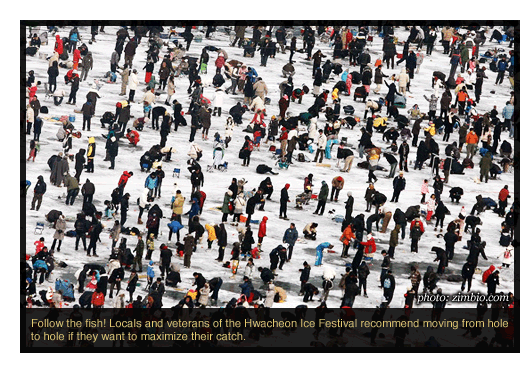
SEOUL: Officials say traces of radioactive material from Japan's stricken nuclear power plant have been detected in South Korea.
Local media reports say South Korea's 12 detection centers have identified traces of iodine-131, cesium-137 and cesium-134, but added that the materials are not dangerous to people or the environment at current levels.
It may be recalled that Seoul first confirmed the existence of radioactive particles in the air on March 28, 17 days after the Fukushima nuclear power plant was damaged by a tsunami that followed the March 11 magnitude-9 earthquake that struck Japan.
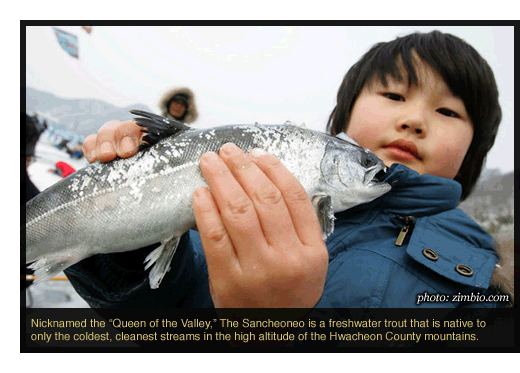

tfw
[align=center][color=magenta]Liberty & Equality or Revolution[/align]
-
New York Governor signs Climate Law that Fines Fossil Fuel Companies
US Political Madness: 2 hours ago -
Meta Llama local AI system is scary good
Science & Technology: 7 hours ago -
This is why ALL illegals who live in the US must go
Social Issues and Civil Unrest: 9 hours ago -
UK Borders are NOT Secure!
Social Issues and Civil Unrest: 10 hours ago
-
This is why ALL illegals who live in the US must go
Social Issues and Civil Unrest: 9 hours ago, 17 flags -
New York Governor signs Climate Law that Fines Fossil Fuel Companies
US Political Madness: 2 hours ago, 11 flags -
Former ‘GMA Producer’ Sues NPR-Legacy Media Exposed
Propaganda Mill: 12 hours ago, 9 flags -
Happy Hanukkah…
General Chit Chat: 13 hours ago, 8 flags -
UK Borders are NOT Secure!
Social Issues and Civil Unrest: 10 hours ago, 6 flags -
Meta Llama local AI system is scary good
Science & Technology: 7 hours ago, 6 flags -
New Footage - Randy Rhoads 1979 LIVE Guitar Solo Footage at the Whisky - Pro Shot
Music: 13 hours ago, 5 flags
-
Meta Llama local AI system is scary good
Science & Technology • 22 • : randomuser2034 -
Former ‘GMA Producer’ Sues NPR-Legacy Media Exposed
Propaganda Mill • 5 • : WeMustCare -
New York Governor signs Climate Law that Fines Fossil Fuel Companies
US Political Madness • 10 • : CosmicFocus -
This is why ALL illegals who live in the US must go
Social Issues and Civil Unrest • 21 • : Solvedit -
Happy Hanukkah…
General Chit Chat • 22 • : AlroyFarms -
FAA Investigates Christmas Drone Show Gone Wrong in Orlando, FL 12/2024
Other Current Events • 13 • : Astrocometus -
DefCon Teetering on Escalation
World War Three • 53 • : annonentity -
Putin Compares Himself to Jesus Promoting Traditional Values Against the Satanic West
Mainstream News • 76 • : WeMustCare -
Trump says ownership of Greenland 'is an absolute necessity'
Other Current Events • 52 • : cherokeetroy -
RFK JR endorses Trump
2024 Elections • 46 • : WeMustCare

